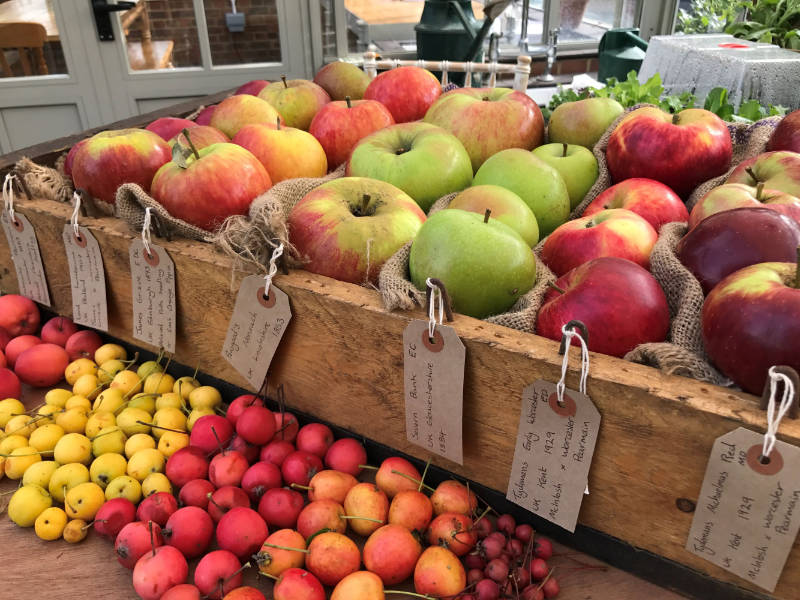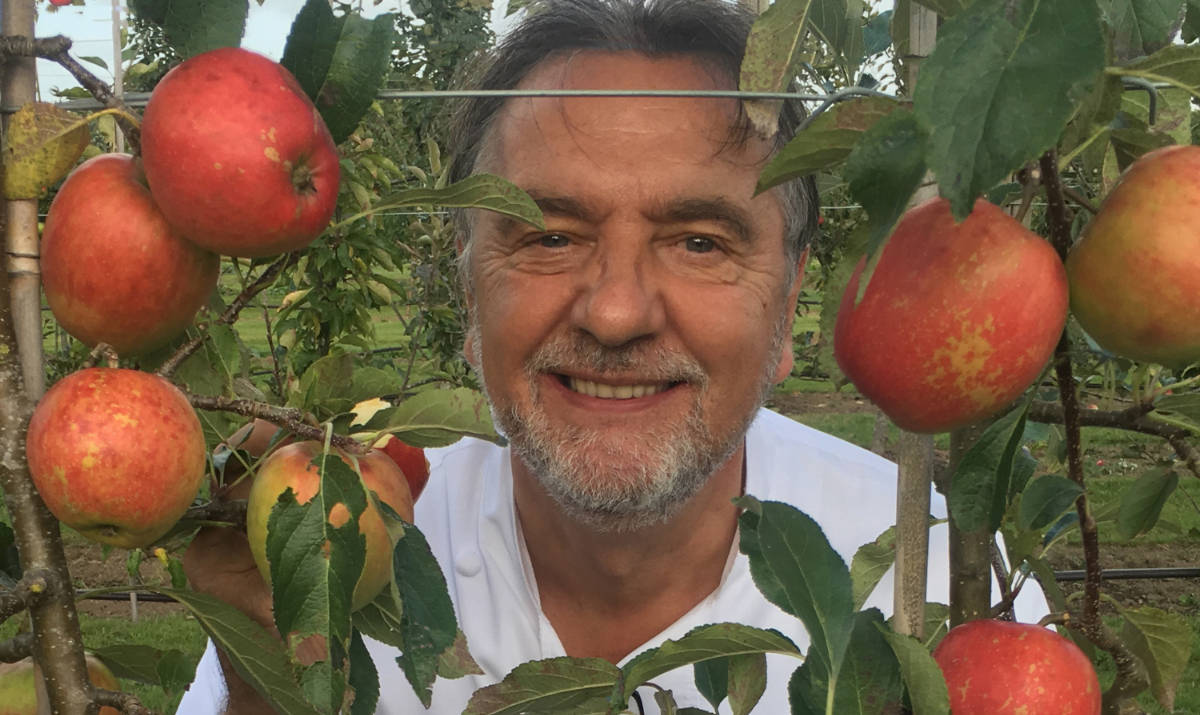From the traditional French tarte tatin to a perfect puree, apples have always been a part of celebrity chef Raymond Blanc’s life.
He has spent years planting more than 2,500 trees in his heritage orchard behind the gardens at his hotel Belmond Le Manoir aux Quat’Saisons in Oxfordshire.
Its harvests should remind us all of the “wonderful varieties of fruits that we may be losing, evoking a time when apples, plums or cherries were connected with a local village, town or county, and could be again,” writes Sue Biggs, director general of the RHS, in the foreword to his new book, The Lost Orchard, a homage to heritage fruits.

“I have had many failures,” admits Blanc. “A big orchard is a massive undertaking, with so many different heritage varieties. It was complicated. I had to find the specialists to help me. I’m in love with my gardens but passion is not enough. You need experts.”
The book takes readers on that journey of discovery, as his team tried out all manner of heritage fruits, from Adam’s Pearmain and Devonshire Quarrenden to Catshead, Keswick Codlin and Chivers Delight.
“As a chef and a Frenchman I don’t make this simplistic and confusing distinction between cooking and eating apples. It is crucial to me to push the boundaries to understand how to achieve the best flavours and textures from every individual apple, in order to give my guests the best, most sublime apple experience,” he writes.Today, he reflects: “I wanted an orchard for heritage, taste and local values, which are being eroded. When you go to a supermarket today, you find five varieties which are [largely] imported from South Africa, China, Chile, New Zealand. The consumer wants the perfect shape, the perfect colour, high yield, resistance to any known disease. Apples are cross-bred to achieve that. Taste is secondary.”
Given that almost two thirds of British apple orchards have vanished since 1970, Blanc is keen to encourage every household to plant an apple tree.
“Even if you have a small garden, a backyard or a balcony, you can plant a heritage fruit tree. It is easy to train an apple, apricot or pear tree against a wall, or grow one in a container. Wherever you live, you can find a variety which will somehow defy the norm,” he states.
Setting his own specific tests, he wanted to find out how each variety would behave when pureed, baked whole, in a tarte ‘Maman Blanc’ or a tarte tatin.
So, if you are thinking of planting an apple tree this year but want a particular type for a particular dish, follow Blanc’s guidelines…
Blanc’s favourite for all: Cox’s Orange Pippin (origin 1825, Buckinghamshire)
“I discovered the most extraordinary, the purest flavour of apples, the most intense, perfumed, layered aromatics with a richness of flavours. The apple was from RHS Garden Wisley,” says Blanc.
The chef enthuses that this is one of the most glorious of all British apples, which was famous in its day, and is still one of the most popular, widely grown and available varieties of all time.
Grow it yourself in the right conditions and you will never again buy a Cox from a supermarket – however, they can be tricky to grow. Although suited to the cool British climate, they don’t like the coldest and wettest sites and are prone to diseases such as scab and canker. If you can only grow one tree, this may not be your choice.
For making apple puree: Adams Pearmain (origin possibly Norfolk or Herefordshire, 1826)
Its origins are unclear, but the Adams Pearmain became one of the most popular eating apples in Victorian times because of its rich, nutty, aromatic flavour and quite dry yellow flesh – yet it’s now almost totally unknown.
This variety is suitable for small gardens, not only for its flavour, but because the upright tree is naturally quite hardy and disease-resistant, especially to scab, and it can be grown in pots.
Harvest in October and store in a cool, dry, dark cellar where the fruit will keep until the end of December, provided the fruits are not too mature when they are picked.
For baking: Annie Elizabeth (origin Leicester 1857)
This apple has pale gold flesh and is perfect for baking. It’s a heavy cropping variety with a pink, almost mauve blossom, that is relatively easy to grow in the garden. Ensure the trees are on a suitably dwarfing rootstock such as M9.
The trees are hardy, vigorous and adaptable, can tolerate mild, wet climates, and are quite resistant to disease. They ripen in late September but can stay on the branches until after the New Year. Provided the fruits are not overripe, they are one of the longest-storing varieties, which can keep until February.
For tarte tatin: Devonshire Quarrenden (origin Devon, 1678)
This one also comes up trumps when it comes to eating fresh, pureed, in tarts and tarte tatin – in fact, everything except baking. Because this deep crimson apple was loved by Blanc’s tasters, he planted 48 in his orchard.
The trees, which crop well, can tolerate quite windy, wet locations, although some traditional gardeners recommend a sheltered location with light soils to get the best from them.
Don’t let the tree overcrop or it will give you a bumper crop one year followed by next to nothing the next. They are early ripeners so best enjoyed straight from the tree in late August, and they will only keep until September.
The Lost Orchard by Raymond Blanc is published by Headline, priced £20. Available now.































































